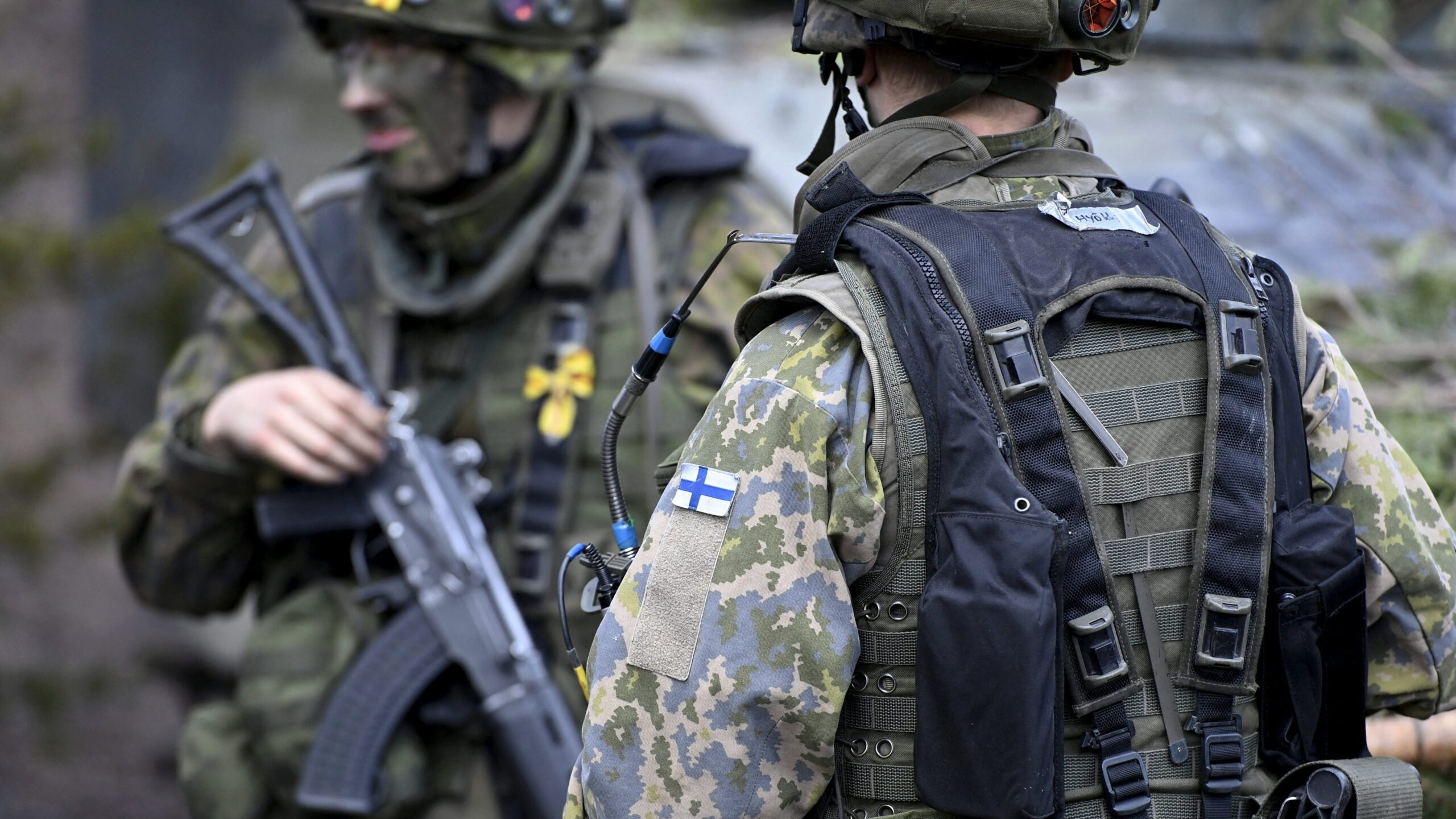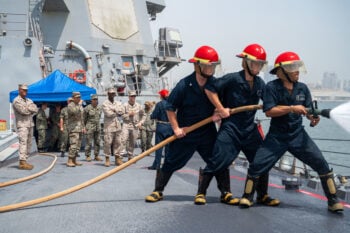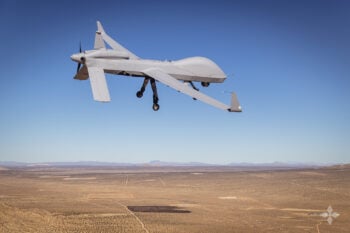
Picture taken on May 4, 2022 shows Finnish soldiers during the Arrow 22 exercise at the Niinisalo garrison in Kankaanpää, western Finland. (Photo by HEIKKI SAUKKOMAA/Lehtikuva/AFP via Getty Images)
HELSINKI — Finland’s decision to store some military equipment in Norway, and later in Sweden, has been long in the making, but gained urgency after Russia’s long-range demonstrations in Ukraine and was sped up further still by the Nordic nation’s recent entry into NATO, according to Finnish officials.
“Obviously when you look at the war in Ukraine, Russia has been all the time using their long-range precision-guided munitions against the capital, Kyiv, key population centers, electricity infrastructure, [and] grain storage ports,” Jarmo Lindberg, former Finnish chief of defense and current parliamentarian, told Breaking Defense in an interview Monday, adding that the target list also logically includes Ukrainian military facilities.
Lindberg, who sits on Finland’s foreign affairs committee, said that as he’s retired from the Finnish armed forces, he can’t speak for why it made the storage decision, but he said you “don’t have to be an operational planner — like me — [to] figure it out yourself. So, Russia is capable of doing that, then maybe you need to have some of your capabilities a bit further away from the Russian border.”
On Monday the Financial Times quoted Finland’s deputy chief for armaments and logistics, Lt. Gen. Mikko Heiskanen, revealing the move to cache equipment in Norway and future plans to store more in Sweden and others further afield.
“We are planning that we would store equipment in other countries. It’s a security of supply issue, dispersing the stocks. We have partially started it already. We plan to do it especially with Sweden and Norway, but also with further-away countries. It’s equipment and ammunition and maybe spare parts,” Heiskanen is quoted as saying.
Heiskanen’s announcement came as Finland completed a test of its ability to execute a war economy, a sprawling effort that included the theoretical use of private firms cooperating with the government to reorient their work towards defense, should the time come.
Lindberg told Breaking Defense that groundwork had been laid for such an international storage arrangement with Norway as far back as the mid-2000s when the two signed an agreement regarding logistical cooperation. But, he said, there’s an “extremely important” difference now: Finland is a fellow NATO member, meaning it’s much simpler to make “holistic operational plans.”
Or, as chief of Finnish defense policy Janne Kuusela put it, NATO membership allows the Nordic nations to just “do what’s wise.”
“We figured out some years ago already that [storing equipment abroad] would be wise to do, say in the north, in the Arctic region, High North — Sweden, Norway, but we have lots of restrictions,” he said in a talk at the US Embassy in Helsinki arranged by the Kaplan Public Service Foundation. (Breaking Defense accepted accommodation from KPSF.) Kuusela listed obstacles like domestic political considerations and questions about how classified information could be handled between the nations.
“Now, all of that is lifted. Now we can actually do what’s wise,” he said. “So now we have much more strategic depth, now, in our cooperation and we can kind of plan things Nordic-wide, in a unified way.”
Having backups in other nations is fitting for Finland, which prizes preparation for potential conflict over all else in its defense policy — a lesson learned from centuries of warfare, much of it with its larger Russian neighbor. And though Finnish officials made clear the nation would always be prepared to fight on its own, Helsinki is beginning to take advantage of new opportunities that come with NATO membership.
“The Nordic countries, we have a long tradition of Nordic cooperation with especially Sweden and Norway, but now when we are all NATO, the focus is totally new,” Kuusela said. “Now we can focus, on how can we as a pack fortify NATO defensive areas in northeastern Europe, and how can we act seamlessly?”
TAI exec claims 20 Turkish KAAN fighters to be delivered in 2028
Temel Kotil, TAI’s general manager, claimed that the domestically-produced Turkish jet will outperform the F-35 Joint Strike Fighter.


























